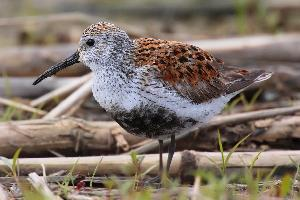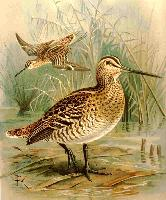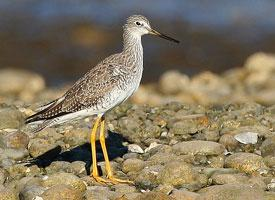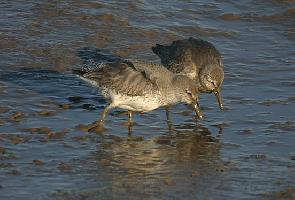
Váhy a míry
| Délka | od 23 do 26 cm |
|---|---|
| Hmotnost | od 100 do 200 g |
| Délka rozpětí křídel | od 47 do 53 cm |
Popis zvířete
The Red Knot (Calidris canutus) is a remarkable and resilient bird species belonging to the sandpiper family, which captivates birdwatchers and conservationists alike. This medium-sized shorebird exhibits a fascinating life cycle and migratory pattern, which has been the subject of extensive study and admiration.One of the most striking features of the Red Knot is its plumage, which undergoes a dramatic transformation throughout the year. During the breeding season, which takes place in the high Arctic tundra, the bird's underparts turn a vibrant rufous or brick-red color, from which its common name is derived. This colorful plumage contrasts sharply with its grayish upper parts, making the Red Knot a spectacular sight in its breeding grounds. Outside the breeding season, the bird's plumage becomes much more subdued, with its body covered in grayish-white feathers, allowing it to blend seamlessly into its winter coastal habitats.
The Red Knot is a long-distance migrant, renowned for its incredible journeys that span thousands of miles. These birds breed in the Arctic regions of Canada, Russia, and Scandinavia, and winter in more temperate zones, including the coasts of South America, Africa, and Australia. Their migration is one of the longest of any bird, and it requires tremendous endurance and navigational skills. The Red Knots rely on a network of critical stopover sites along their migratory routes where they refuel on rich food sources, such as the eggs of horseshoe crabs in the Delaware Bay, which are vital for their survival and successful breeding.
In terms of behavior, Red Knots are gregarious birds, often seen in large flocks during migration and in their wintering grounds. They feed primarily on invertebrates, probing the sand with their short, straight bills to extract prey. Their diet includes mollusks, crustaceans, and various types of worms, which they skillfully locate using both sight and touch.
The breeding behavior of the Red Knot is equally fascinating. After arriving in the Arctic tundra, they quickly set about the business of reproduction. Nests are simple depressions on the ground, lined with leaves and lichens. Both parents share responsibilities for incubating the eggs, and once hatched, the chicks are precocial, meaning they are relatively mature and mobile from the moment of birth. This is crucial for their survival in the harsh Arctic environment.
Unfortunately, the Red Knot faces numerous challenges and threats, primarily due to habitat loss and degradation along its migratory routes and wintering grounds. Climate change also poses a significant threat, affecting the availability of food sources and the integrity of their breeding habitats. As a result, certain populations of the Red Knot have experienced dramatic declines, leading to increased conservation efforts to protect this remarkable species. Conservation measures include habitat protection, research, and international cooperation to ensure the survival of the Red Knot for future generations to marvel at and enjoy.
Mapa výskytu
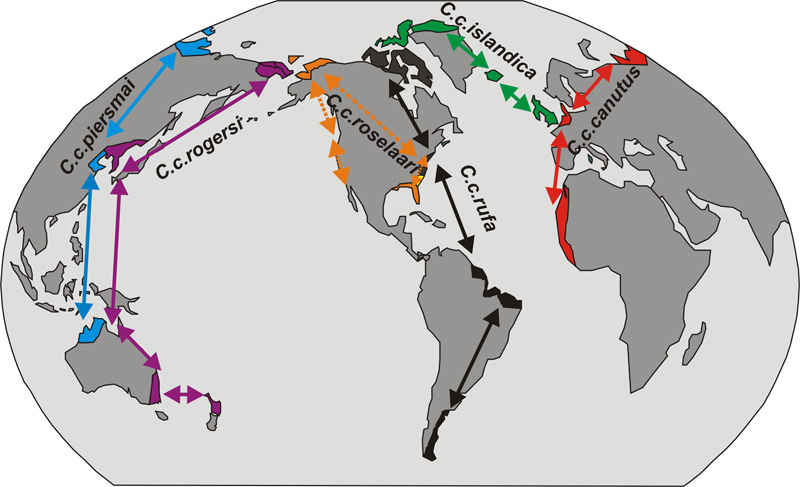
Podobná zvířata
Nové fotografie zvířat
Top 10 zvířat
- Chinese water dragon (Physignathus cocincinus)
- Galápagos tortoise (Geochelone nigra complex)
- Dolphin gull (Leucophaeus scoresbii)
- Japanese macaque (Macaca fuscata)
- Colombian red howler (Alouatta seniculus)
- Sea urchins (Echinoidea)
- Moustached guenon (Cercopithecus cephus)
- Diana monkey (Cercopithecus diana)
- Common reed warbler (Acrocephalus scirpaceus)
- Common house mosquito (Culex pipiens)
